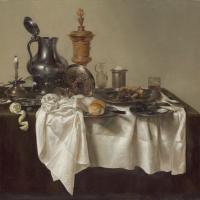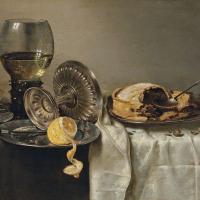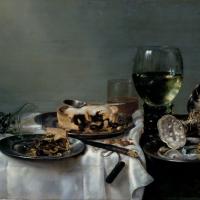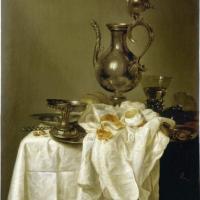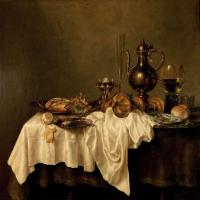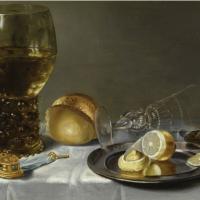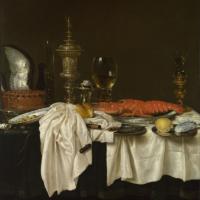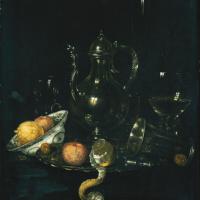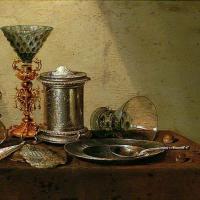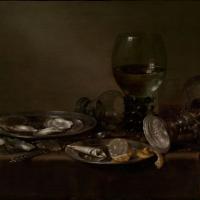Willem Claesz. Heda
Banquet Piece With Ham
$450.00
Banquet Piece With Mince Pie
$510.00
Heda
$510.00
Still Life Of A Pewter Kanne
$450.00
Still Life Of A Roemer
$450.00
Still Life With A Gilt Cup
$480.00
Still Life With A Lobster
$450.00
Still Life With Oysters
$450.00
Willem Claesz. Heda
Williem Claesz. Heda (1593/1594-1680/1682)
Williem Claeszoon Heda (December 14, 1593/1594 – c. 1680/1682) was a Dutch Golden Age artist from the city of Haarlem devoted exclusively to the painting of still lifes. He is known for his innovation of the late breakfast genre of still life painting.
Heda was born in Haarlem, the son of the Haarlem city architect Claes Pietersz. His mother Anna Claesdr was a member of the Heda family. His uncle was the painter Cornelis Claesz Heda. Heda's early life is all but unknown, with no surviving pieces dated to that period. Judging from his date of birth, scholars have speculated that Heda began painting around 1615. His earliest known work was a Vanitas which fit the monochromatic and skillful texturing of his later pieces, but portrayed a subject matter distinct from the depictions of more sumptuous objects in his later years. This Vanitas, and the two other breakfast pieces by Heda in the 1620s were known for their clear deviation with earlier breakfast-pieces. The objects in these works demonstrate greater special effect and maintain a sense of balance for the viewer despite the uneven and diagonal grouping of objects. Additionally, these works adopted the monochromatic style contrary to early breakfast-pieces.
Heda's skill was recognized early on in his career by other notable figures in Haarlem, such as Samuel Ampzing, a Dutch minister and poet from Haarlem, who captured the city in poetry. Heda won enough local fame in his own day for Ampzing to praise him in the same breath with Salomon de Bray and Pieter Claesz in his 1628 Beschryvinge ende lof der stad Haerlem in Holland. "[I] ha[ve] to praise Heda with the banquet pieces of Solomon de bray and Pieter Claesz, their skill deserves to be mentioned in his poem."
Following his support from Samuel Ampzing, Heda became a member of the Haarlem Guild of St. Luke. As evidenced by his signing of a new charter to regularize the affairs of the guild on May 22, 1631, Heda was an active member of the Haarlem Guild of St. Luke.
Heda's final years saw the artist begin the transition from the late breakfast still-life paintings he helped create, to the pronk, or display, still-life pieces of Willem Kalf in Amsterdam. His last known works were painted in 1664 (Private collection, The Hague) and 1665 (Museum del Monte, Brussels), and contained the warmer pallette of browns associated with Kalf's pieces. Though he lived until the 1680s, Heda's last known paintings were created in the 1660s. Heda died in Haarlem in 1680 or 1682.
Heda's renewed popularity in the latter half of the 19th century resulted in the dissemination of his pieces throughout the world. His works can now be found on display in some of the world's most famous museums: the Rijksmuseum, Amsterdam; the Metropolitan Museum of Art, New York; the Louvre, Paris; The National Gallery, London; The National Gallery of Art, Washington, D.C.; The Kunsthistorisches Museum, Austria; and the Hermitage, St. Petersburg.
As one of the most recognized Dutch masters and one of the signature artists of the still life genre, his paintings feature in general surveys of art history as some of the highlights of Dutch seventeenth-century painting. His pupils include Maerten Boelema de Stomme, Gerret Willemsz Heda, Hendrik Heerschop, and Arnold van Beresteijn.





